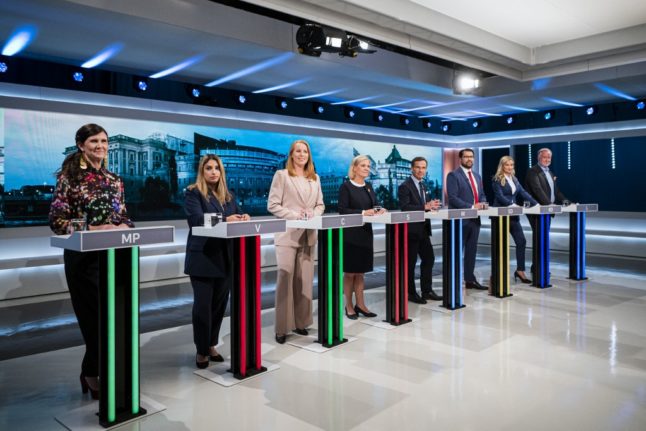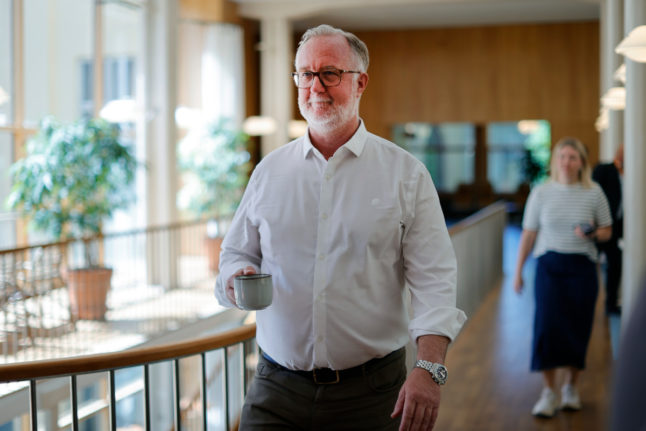NATO
For two centuries, Sweden’s policy was to stay out of military alliances. But public and political support for joining NATO soared following Russia’s invasion of Ukraine, leading the country to apply for membership in mid-May along with neighbouring Finland.
Despite assurances that the countries would be welcomed into the alliance “with open arms,” they’ve faced intense opposition from Turkey, which accuses the Nordic countries of providing a safe haven for terrorist groups.
A deal was struck between the three countries in June, which included provisions on handling extraditions and sharing information.
All parties, except the Left and the Greens, back membership but the incoming government will need to manage the tense relations with Ankara, which has insisted it could still block the countries’ entry — which requires ratification by all North Atlantic Treaty Organization member states — if it feels Sweden and Finland do not deliver on their promises.
Greta effect?
Two weeks ahead of Sweden’s 2018 election, then 15-year-old climate activist Greta Thunberg began sitting outside Stockholm’s parliament building with her now-iconic “School Strike for Climate” sign.
Her protest urged politicians to bring Swedish emissions in line with the 2015 Paris Agreement.
At first it garnered little attention, but soon sparked a global movement, leading Thunberg to travel the world to address — and often berate — world leaders.
Thunberg has spoken at the UN, been named a TIME person of the year, and even been tipped as a favourite to win the Nobel Peace Prize.
But heading into this year’s Swedish election, climate concerns have retreated. Voters are more concerned with law and order amid rising gang violence, and energy policy with soaring gas and electricity prices.
This is the first election where the young climate activist is eligible to vote. On Friday she lamented that “the climate crisis has been more or less ignored in this election campaign”.
Covid pandemic
Sweden’s handling of the Covid-19 pandemic has also been notably absent from the election campaign.The country made headlines when it refused to implement draconian measures as other countries around the world went into lockdown.
Despite a soaring death toll as the virus surged in elderly care homes, Swedish authorities opted to keep society relatively open, arguing that a lockdown would be more detrimental to public health than the virus.
Instead it introduced voluntary recommendations, and as the pandemic wore on, limits on public gatherings and opening hours at bars and restaurants. Face masks were only advised in some situations.
The country’s Covid toll of 1,901 deaths per million in early September was below the EU average of 2,529 per million, according to Our World in Data.
“Most people are happy with the strategy”, author and journalist Jens Liljestrand told AFP, explaining the lack of debate on the subject in the campaign.
The pandemic “hasn’t left any mark, it’s like a collective blackout”, he said.
Electoral system
Sweden’s single-chamber parliament, the Riksdag, has 349 seats and is the country’s supreme decision-making body.
A general election is held every four years, and to get into parliament parties must amass a minimum of four percent of votes.
In order of the number of seats, the current parties are the ruling centre-left Social Democrats, the conservative Moderate Party, the anti-immigration Sweden Democrats, the Centre Party, the Left Party, the
Christian Democrats, the Liberals and the Green Party.
Following an election, the speaker nominates the prime ministerial candidate they believe is most likely to be supported by parliament, which is then voted on by MPs.
Under the Swedish system a candidate needs to be tolerated by parliament to be elected, meaning they can assume office as long as a majority does not vote against them.
While the Social Democrats held on to government power without interruption for four decades until the 1970s, today’s more fractured political landscape means governments have in recent decades needed to rely on alliances and coalitions to secure power.
Schoolchildren to the polls
In Sweden, students over the age of 13 can cast ballots in a nationwide “school election” aimed at raising awareness about voting and politics.
Participating schools follow the real election campaign, with students voting in school for the actual parties in a simulation of the official election.
This year, 1,580 schools have signed up for the initiative, organised by the governmental Agency for Youth and Civil Society, and over half a million students are expected to cast ballots.
Students will even have their own election day rally where they will be able to watch their results tick in live on Monday, the day after the official vote.
In the previous school election in 2018, the country’s teenagers showed a preference for the conservative Moderates, which won 21.23 percent of their votes, followed by the centre-left Social Democrats with 19.53 percent and the far-right Sweden Democrats with 15.5 percent.



 Please whitelist us to continue reading.
Please whitelist us to continue reading.
Member comments